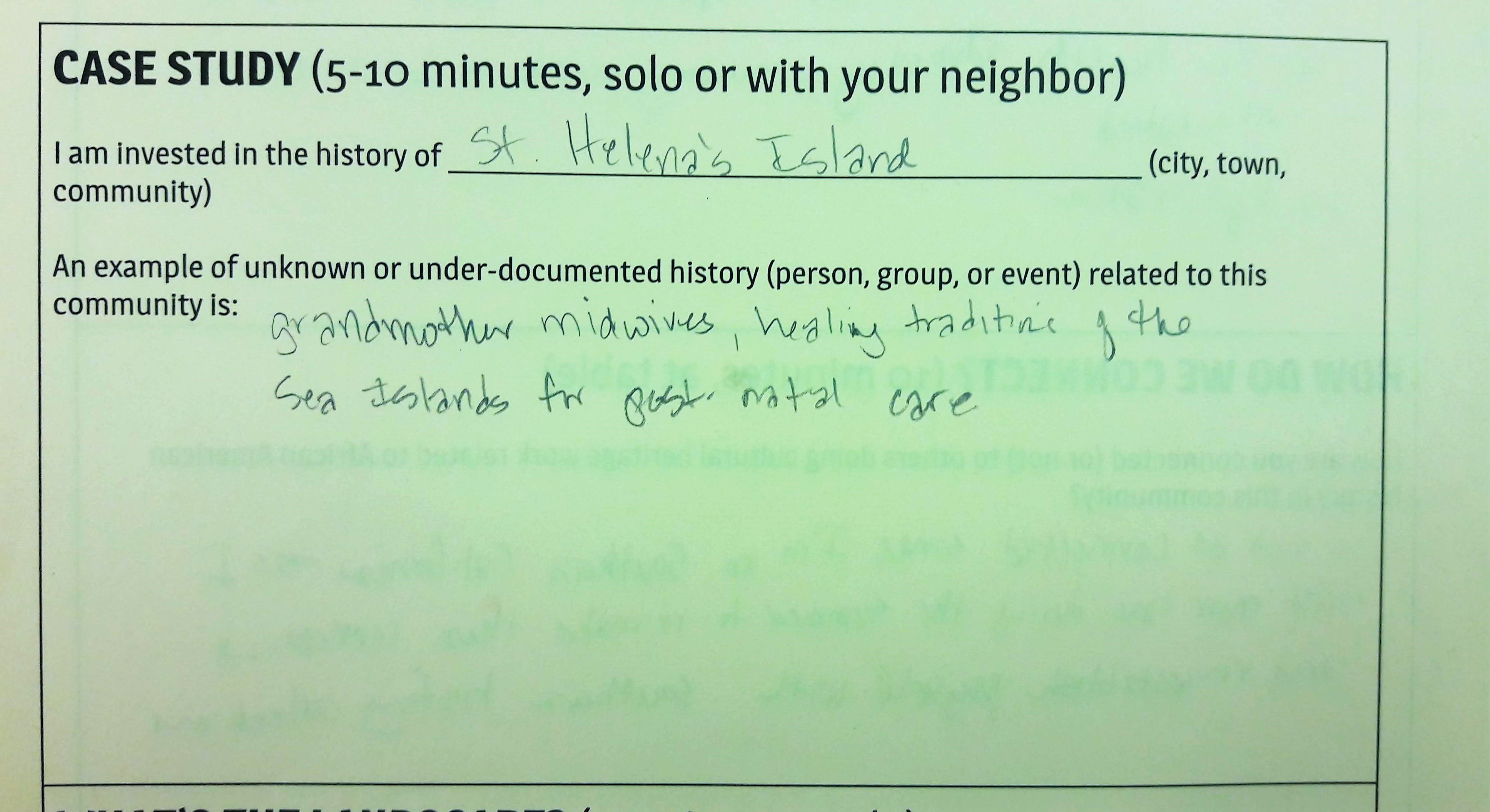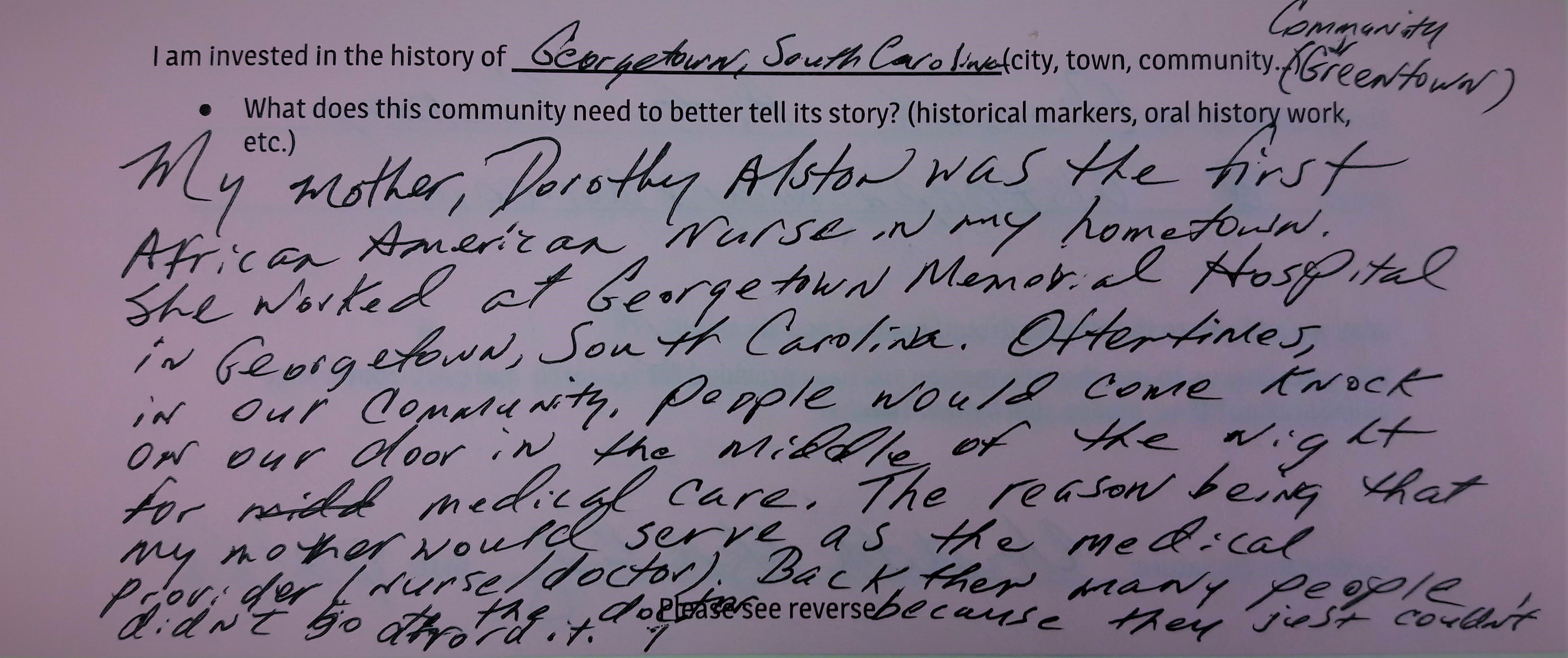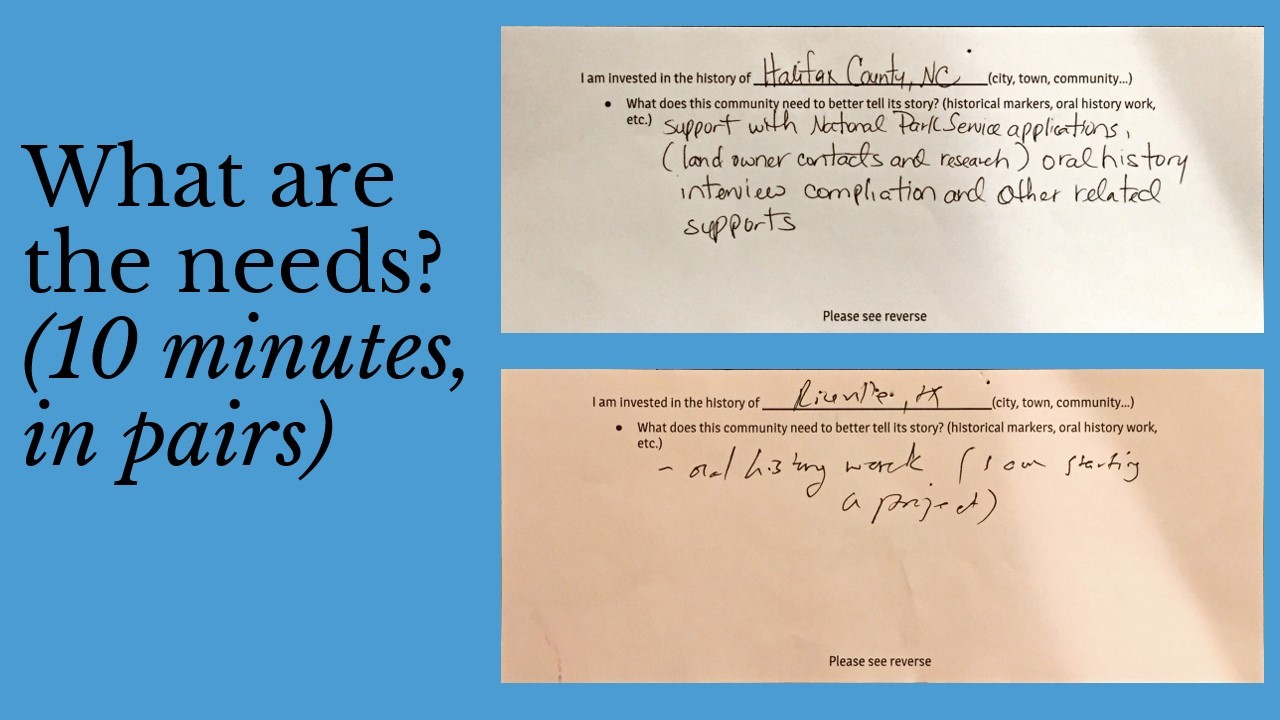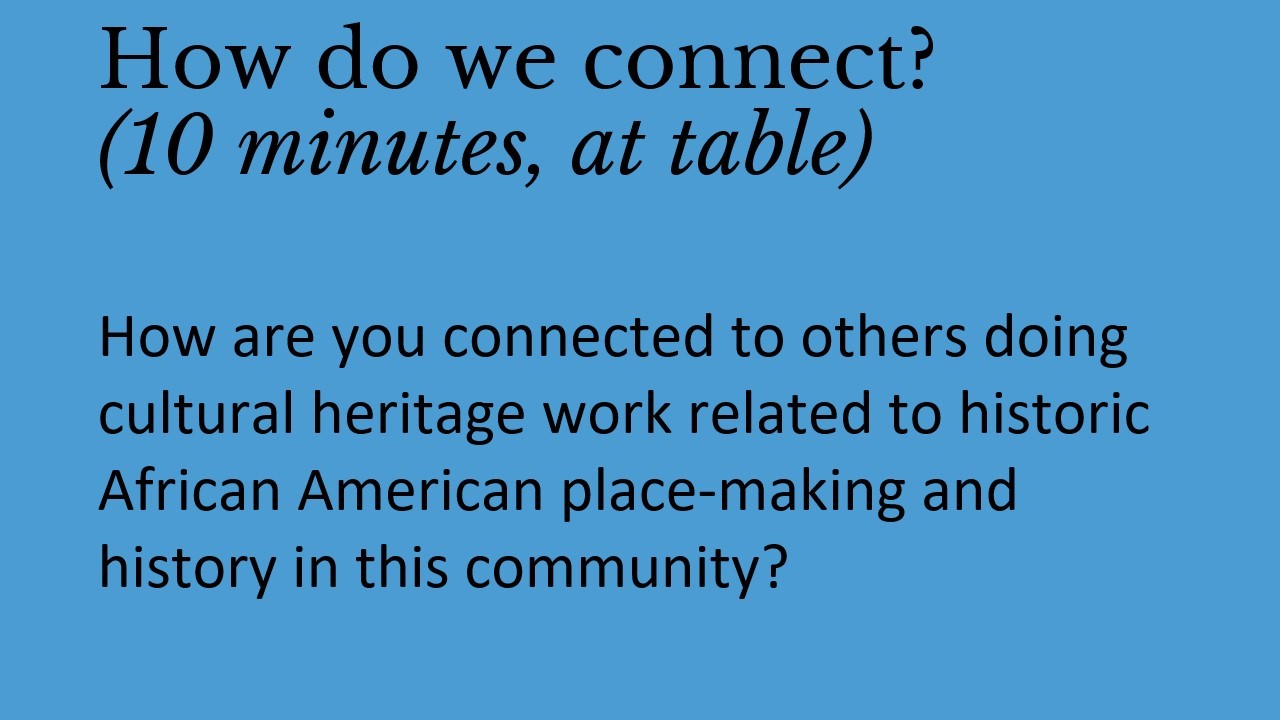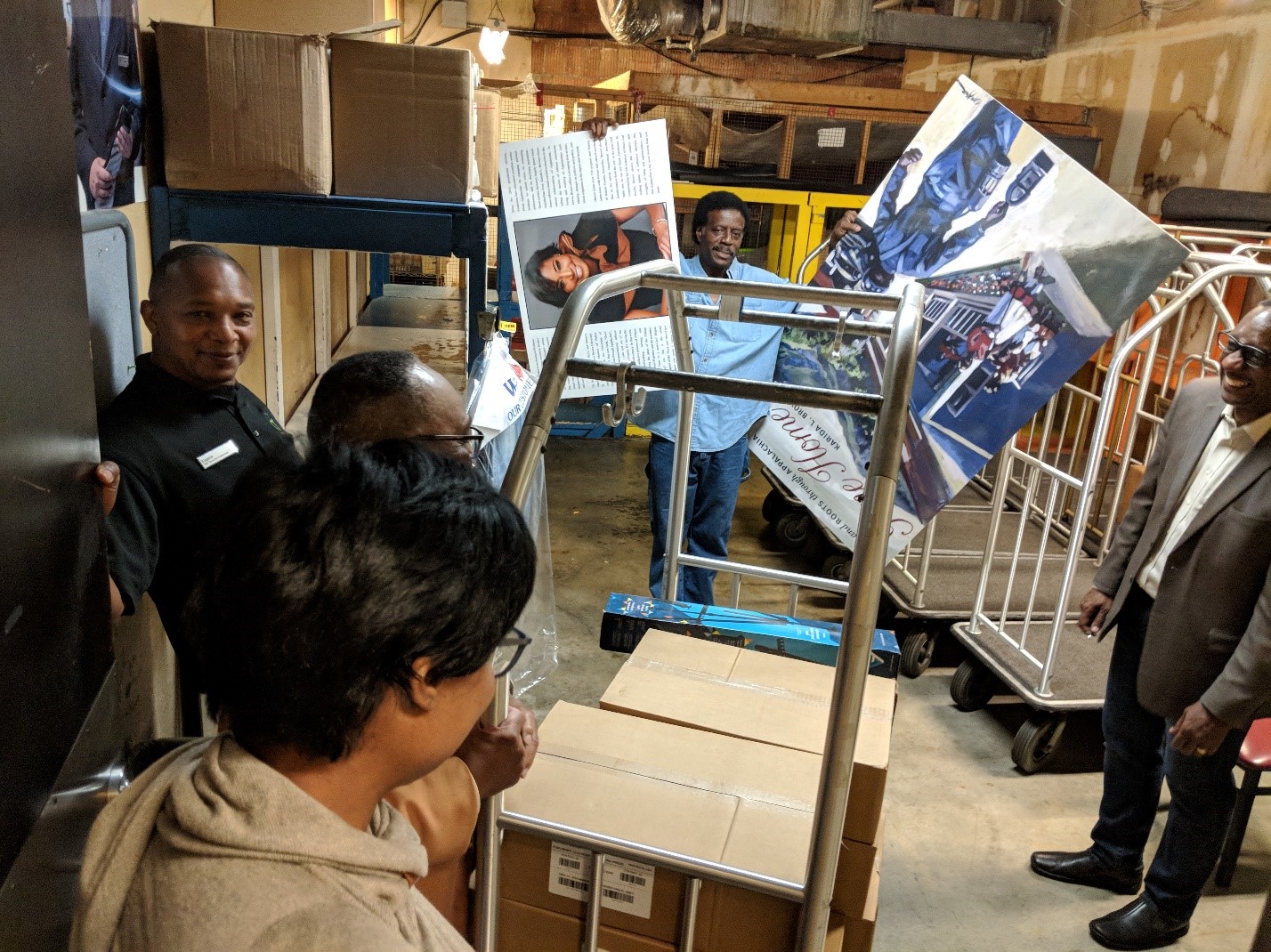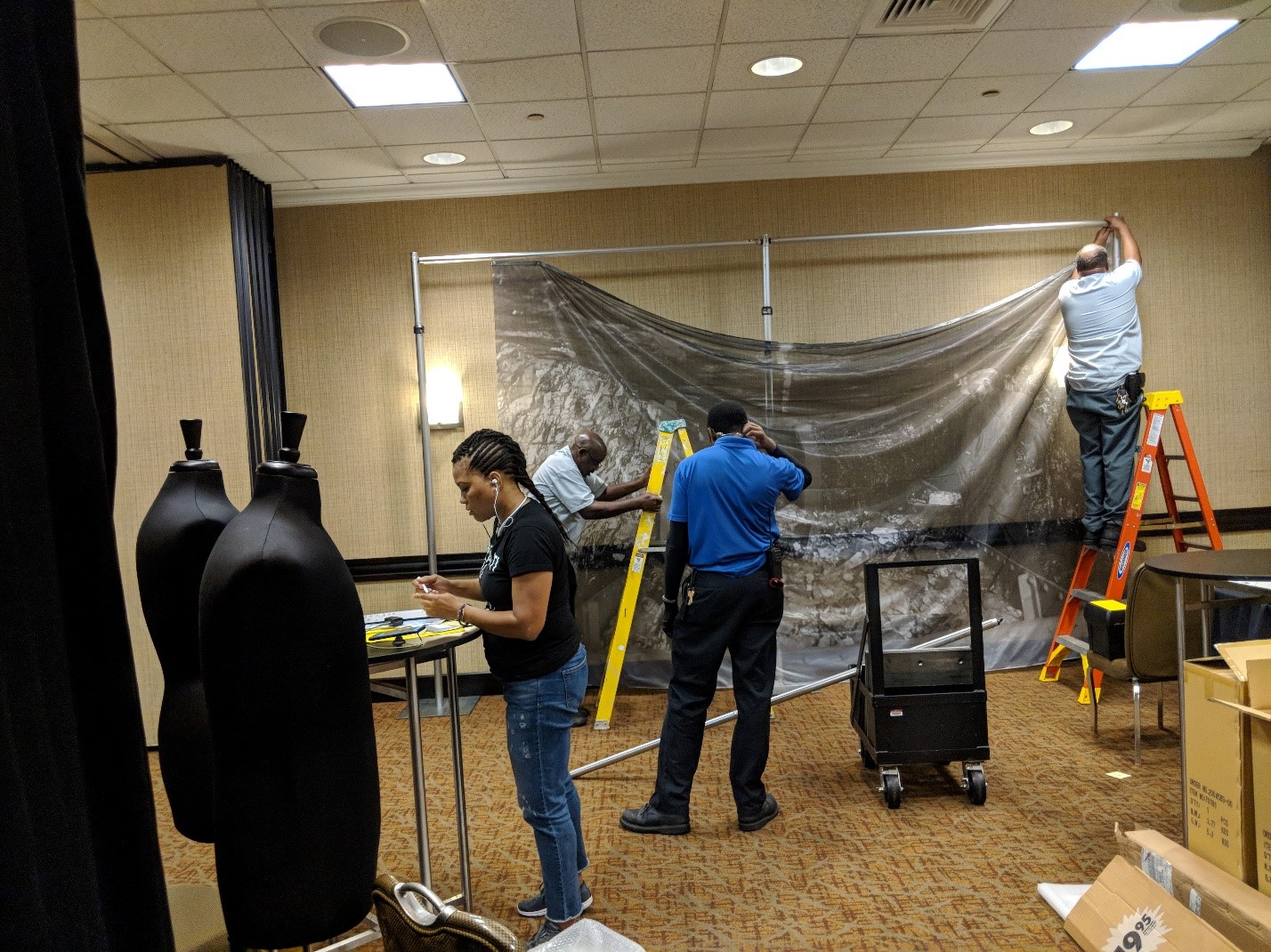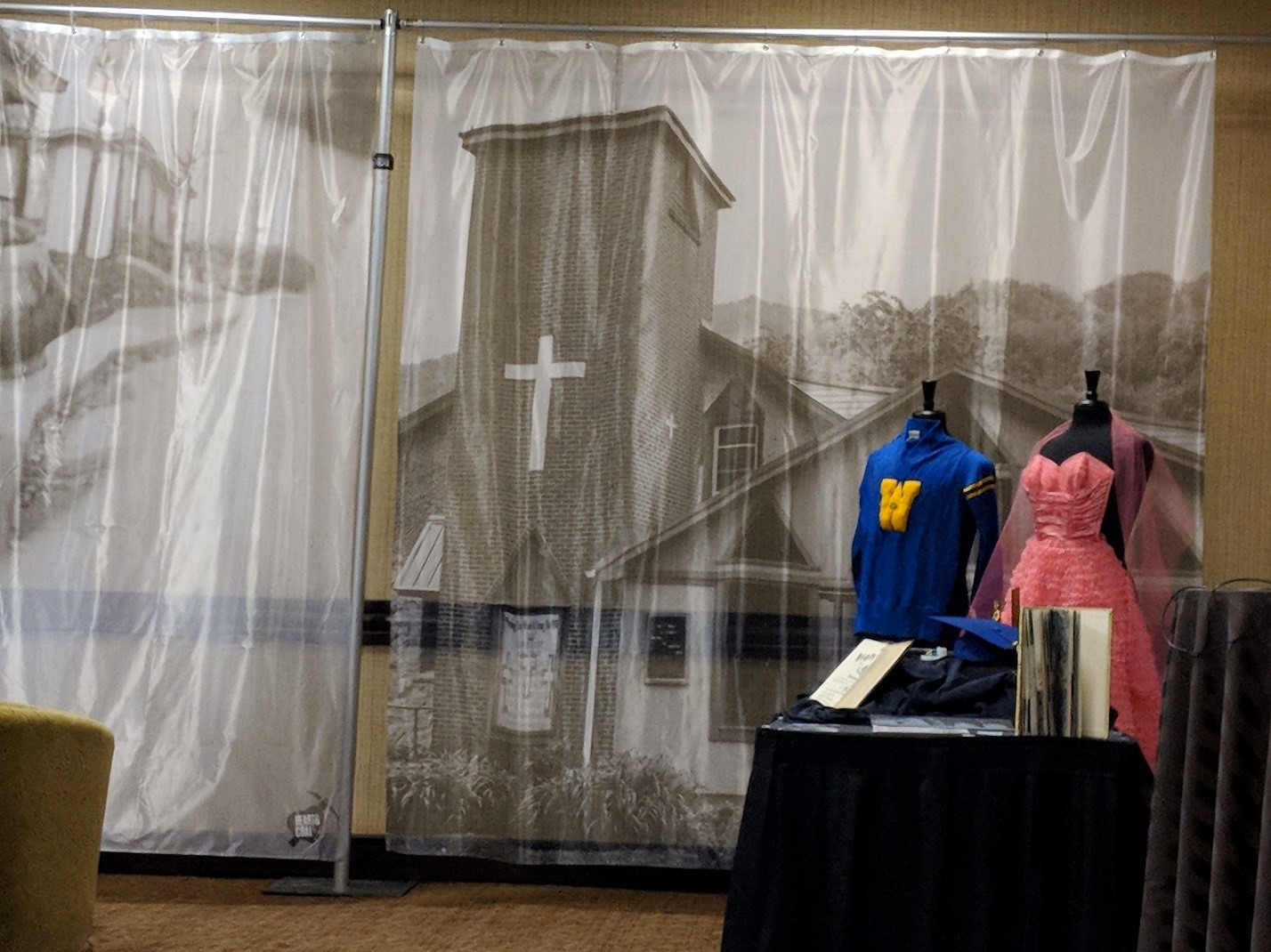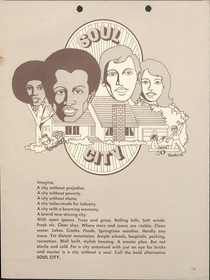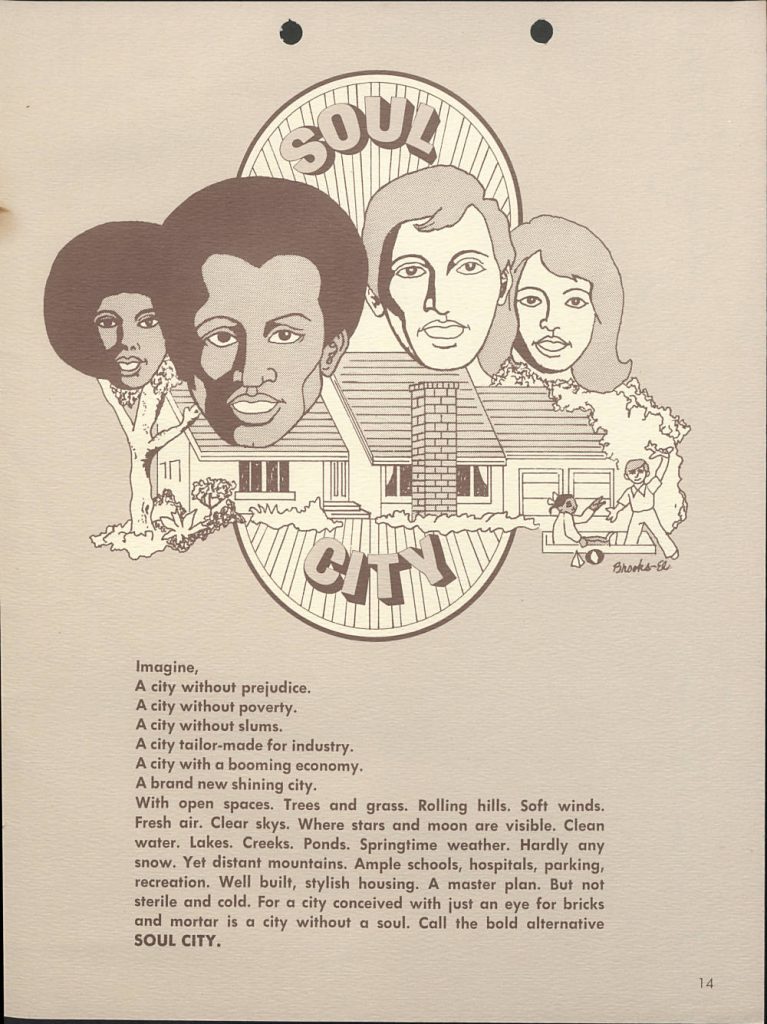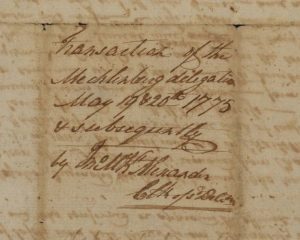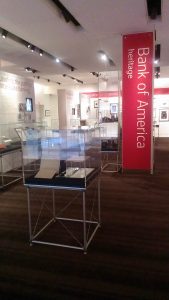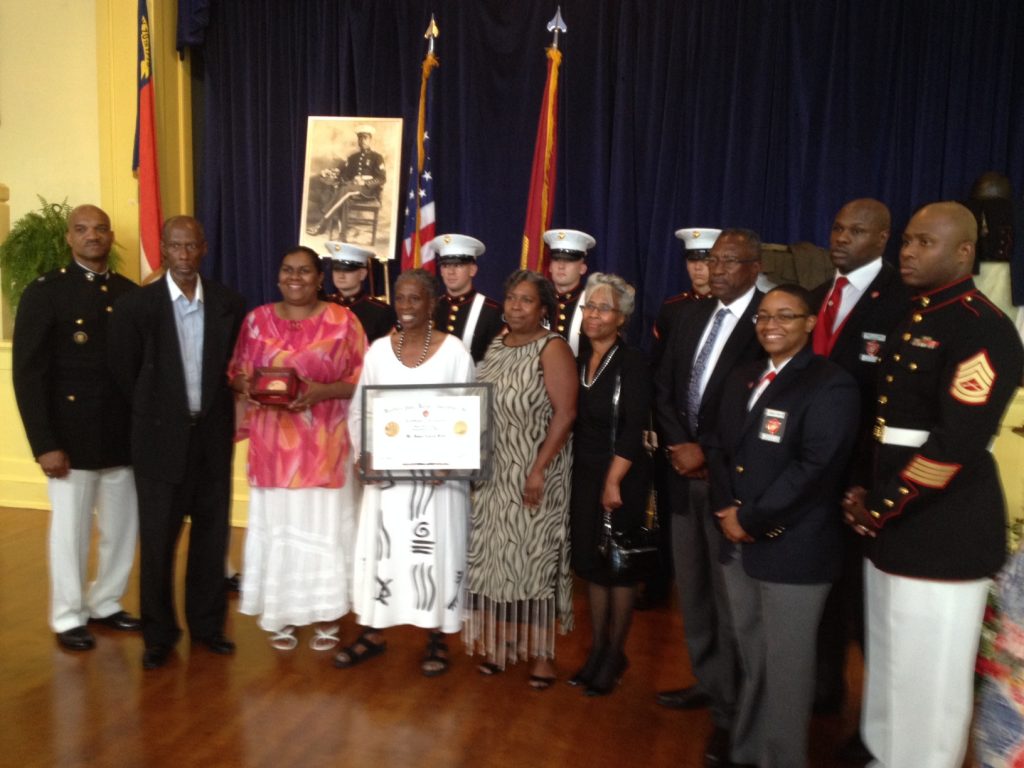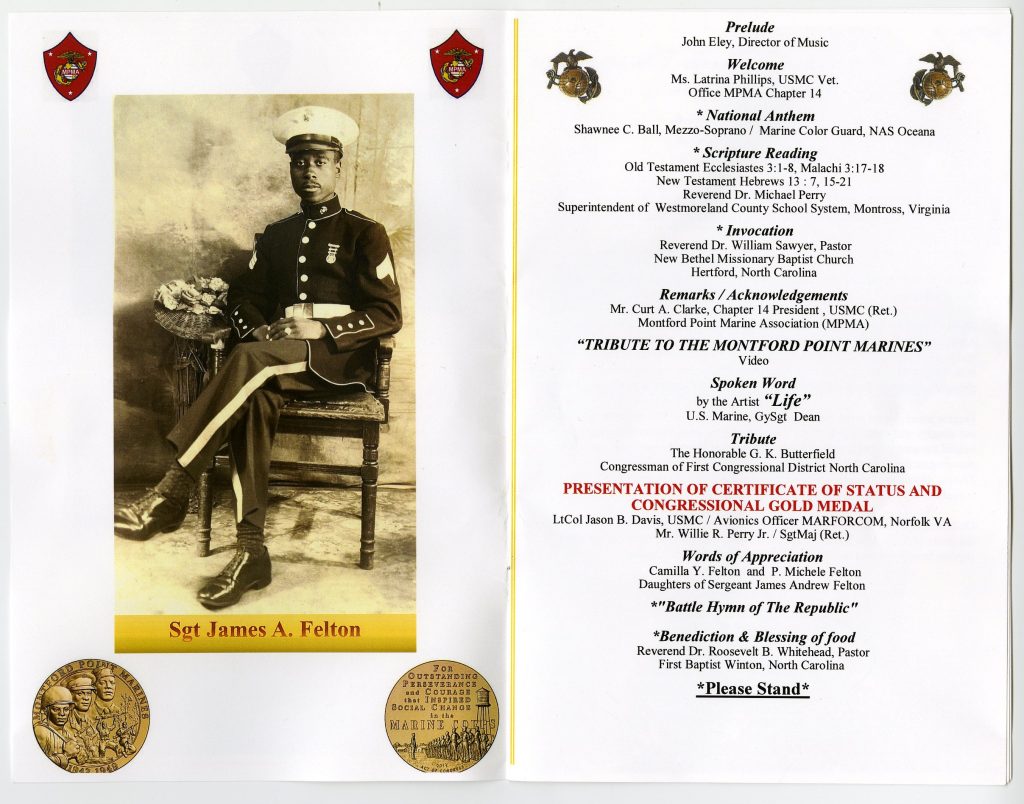In August 1899, the determined leaders of Mooree Quarters, the Black neighborhood of Oxford, Alabama, formed a separate town: Hobson City. It would be the first incorporated Black municipality in Alabama and the second in the nation.
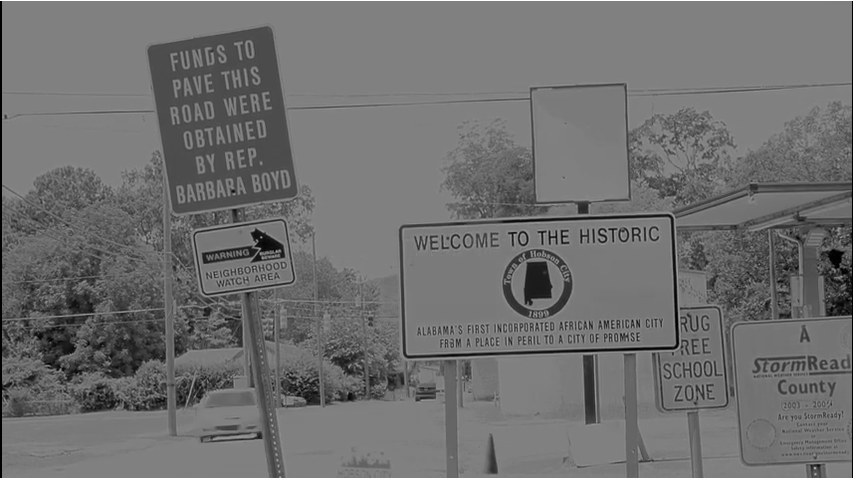
Over the next several decades, Hobson City developed into a magnet for Black excellence and entertainment in the South. Today, Mayor Alberta McCrory wants to share the remarkable history of Hobson City and other historic Black towns in Alabama at the Hobson City Museum.
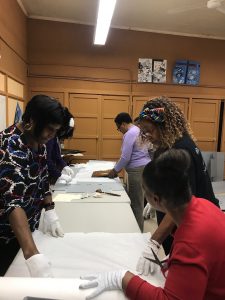
Through a partnership with the University of North Carolina at Chapel Hill Libraries’ Community Driven Archives (CDA) project, Hobson City Museum hosted a workshop in March 2020 that focused on caring for museum collections. Three UNC Libraries staff members provided training to residents of Hobson City and nearby Anniston on how to clean, handle, store, and inventory plaques, textiles, trophies, and photographs that document the contributions of local leaders such as James “Pappy” Dunn. Town Hall Clerk Pauline Cunningham was the Hobson City coordinator for the workshop and also participates in another CDA archival training program called Archival Seedlings. I met with Pauline over Zoom to reflect on our collaboration in March and the future of the Hobson City Museum.
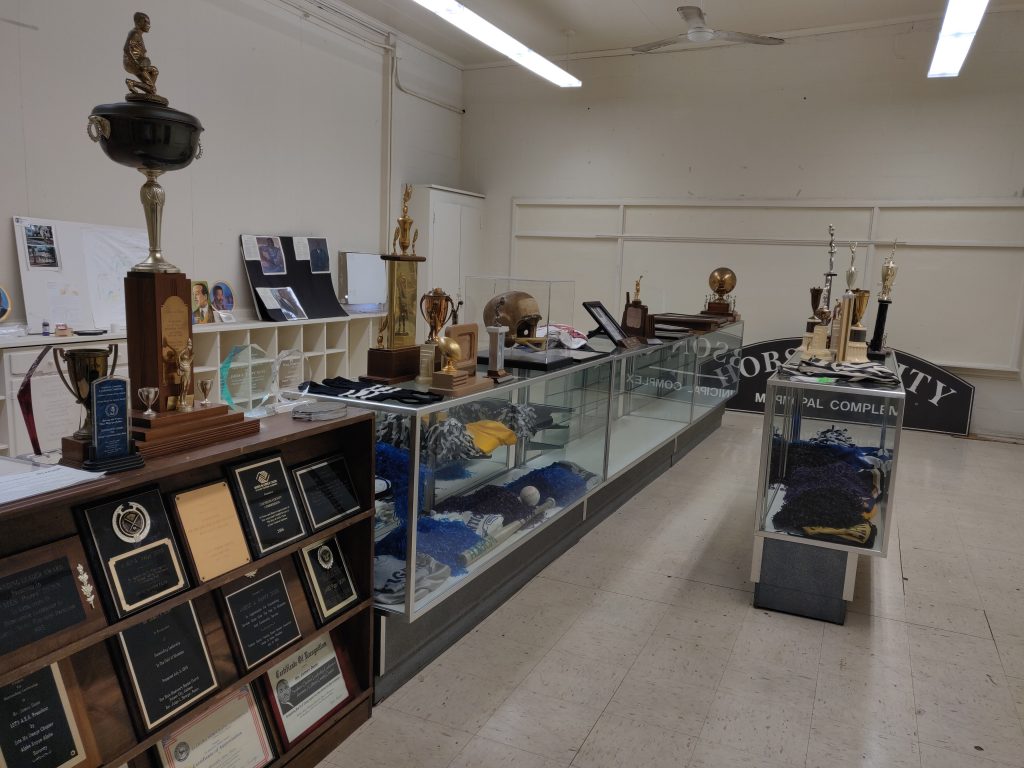
Conversation with Hobson City, Alabama Collaborator Pauline Cunningham
Q: What is the purpose of Hobson City Museum?
Pauline Cunningham: To be educational and show the history of Hobson City and who was all involved in making a change in Hobson City. We started with [James] “Pappy” Dunn because he invested so much time, money, and energy in making a change for Hobson City.
Q: Who do you see as the visitors, and what kind of information do you hope they get out of it?
PC: We want people from all over—all over the United states, all over the world—to be able to come, see, learn, and understand the struggle that Hobson City has had in the past; and maybe in due time we’ll also show the struggle that’s happening right now. Not because of COVID-19, just because of the economy.
Q: What was the museum’s goal for the workshop in March, and was it met?

PC: Not knowing anything, I feel like we learned so much. We learned how to archive, how to clean with the right agents. We learned how to do so many things. How to preserve. It was so educational. I think my downfall is going to be, the people [who] were there this year to learn, [they] might not be there when [COVID-19] is over. I plan to try to write everything down and to make what we call a SOP [Standard Operating Procedures] for the military—how to do each step. I would love to add a DVD to it with all the videos that we had when learning from the different presenters [our series of how-to webinars through the Archival Seedlings program].
Q: The workshop happened as COVID-19 cases started to spread nationally. How did COVID-19 affect the museum in March? How has it continued to affect the museum?
PC: It really went to a standstill. I’m older. I’m in that population that you don’t need to be out there unless you have to be, so it really went to a standstill; that’s the bad thing. The good news, I guess, will be once I start doing the SOP [manual], maybe somebody else can pick it up and keep doing some things; but right now, we’re at a standstill because of COVID-19.
Q: What do you think is the number one challenge going forward with skills gained through the workshop?
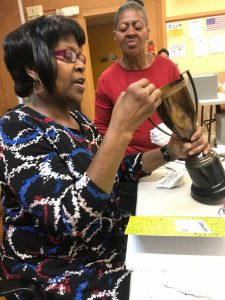
PC: The memory that I won’t have if I don’t write it down. And the challenge is going to be getting the right people to continue to help with the museum, even though it doesn’t seem like a large project to some people. But it’s getting that volunteerism to come out and help—to work for the City, to get the City up and running—and I believe those that decide to do it, they’ll do it from the heart. So that’s going to be my challenge: to find the right people to make it continue to go.
Q: Should those people be in the community or people outside?
PC: Both really. Reality: when you guys were down in March, everybody there except for two people were from outside [Hobson City]…including myself [Pauline is a resident of nearby Anniston, AL.].
Q: What is the number one challenge of the museum?
PC: Space…availability for the museum. The challenge is going to be to utilize the space the best way to display or to show what we want to. Part of it [is] going to be the videos of people talking about the history, and some of the pictures, and some of the stuff we’ll just scan to make the rotating [slideshow] and voice behind it—where it came from, who donated it, and why it’s important—that sort of thing. That’s the challenge—putting [in] the right mix for such a small space.
Q: What was your favorite part of the workshop?
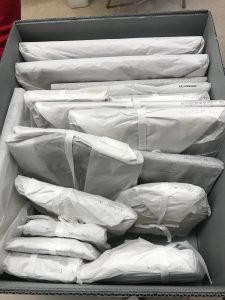
PC: I have two: One was archiving and learning how to do it right, so you can go back and find it on your archive list and where you stored it. And two was the cleaning of the artifacts. That to me was very critical because I would have messed it up! Because I would have used some regular cleaning detergent type stuff. So that—those two—how to store and clean and archive, that was tremendous. I loved it. I loved it.
Q: What question do you wish I asked you? Is there more you’d like to say?
PC: Just that I want to make sure I’m able to put the SOP [manual] together on how to do each thing. If I die tomorrow, somebody else can pick up the ball and run with it and know how to do it right. If I can pull all that together, I would love it. It’s a win-win for the City and for the education provided to us.
Want to learn more about Hobson City? Visit the town website and watch the documentary Hobson City: From Peril to Progress, 27 min, by Hiztorical Vision Productions.
Read more about our work in collaboration with Hobson City, AL and other members of the Historically Black Towns and Settlements Allliance (HBTSA) on the Southern Sources blog:
The Community-Driven Archives Project at UNC-Chapel Hill is supported by a grant from the Andrew W. Mellon Foundation.
Follow us on Twitter @SoHistColl_1930 #CommunityDrivenArchives #CDAT #SHC

 Our Street Team table at BlackCom2018 at the Carolina Theatre, Durham NC.
Our Street Team table at BlackCom2018 at the Carolina Theatre, Durham NC.
